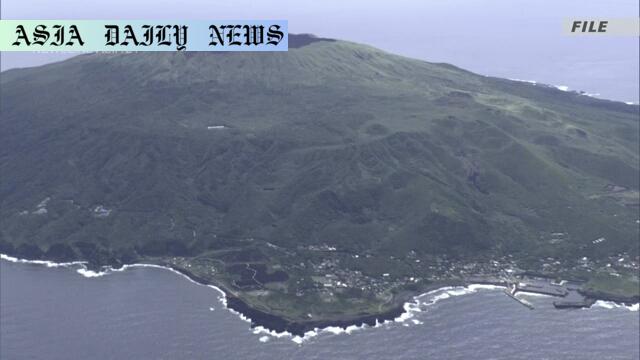Volcano Alert: Japan issues level-2 warning for Miyakejima due to seismic activity indicating potential eruption near the crater.
- The eruption alert level for Miyakejima Island has been raised to level-2 by Japan’s Meteorological Agency.
- Seismic activity beneath the volcano’s crater indicates the possibility of an eruption near the area.
- Residents have been cautioned to stay away from the crater due to risks of cinders and localized hazards.

Rising Threat of Volcanic Eruption on Miyakejima Island
Japan’s Meteorological Agency has recently raised the eruption warning alert level for Tokyo’s Miyakejima Island to level-2, a precautionary step indicating potential volcanic activity in the near future. This level, although the second-lowest on the 1-5 scale, serves as an essential reminder of nature’s unpredictability and the necessity for readiness in the face of such seismic events. The agency issued the announcement after discovering increased seismic activity beneath the volcano’s crater starting earlier in the day. Such patterns are often interpreted as signs of magma movement deep underground, which can lead to significant eruptions affecting surrounding regions.
A History of Volcanic Activity
Miyakejima Island has a long and turbulent history of volcanic activity. In 2000, the island witnessed intensified volcanic events, eventually forcing residents to evacuate. The eruption during this period brought about frequent ash falls and the emission of considerable volcanic gases, creating an inhospitable environment. So severe were the conditions that residents were unable to return to the island for approximately four and a half years. The lingering memory of that evacuation has left a deep impression on both local residents and disaster management authorities, emphasizing the importance of taking such warnings seriously.
Current Observations and Implications
Recent observations on the island have revealed a concerning trend of ground expansion deep under the volcano, implying the accumulation of magma. Although no eruptions have been recorded since 2013, this phenomenon signifies the potential for future activity. The level-2 warning highlights the immediate risk of localized hazards such as the discharge of large cinders or minor eruptions that could affect areas near the crater. Public authorities are urging all individuals to steer clear of the crater and remain alert, particularly if they are close to the caldera area.
The Importance of Proactive Measures
Public safety remains a priority in such events, and the current warning serves as a valuable period to prepare for the unforeseen. For local residents and tourists alike, staying updated with the latest announcements from Japan’s Meteorological Agency is of paramount importance. Emergency services, meanwhile, are likely ramping up their preparedness protocols to ensure swift evacuation or support if the situation deteriorates further. Educating the public, providing clear evacuation guidelines, and emphasizing precautionary behavior are essential pillars of disaster management that could mitigate potential damage and loss of life.
The Role of Science in Monitoring Volcanoes
Scientific advancements over the years have greatly enhanced our ability to monitor and predict volcanic activity. Seismologists utilize a combination of ground deformation measurements, seismic wave analyses, and geochemical observations to estimate the likelihood of eruptions. The example of Miyakejima not only underscores the critical need for such technologies but also highlights the importance of continuous research and funding in the realm of geological sciences. These methods, combined with real-time notifications, provide ample opportunities for informed decision-making by communities, government agencies, and disaster response teams.
Conclusion
The raised alert level for Miyakejima is a sobering reminder of the power of nature and the ongoing need for vigilance in volcanic regions. While the current level-2 warning does not require immediate evacuation, it provides an essential opportunity for preparation and awareness. Authorities and researchers will continue to monitor the situation, ensuring timely interventions if conditions escalate. By staying informed and prepared, both residents and visitors can significantly reduce risks and ensure their safety during potentially perilous natural events.



Commentary
The Resilience of Miyakejima’s Community
Volcanic activity is one of nature’s most dramatic displays, yet it also poses serious challenges for communities living within the shadow of such powerful geological structures. Miyakejima Island is an exemplary case that reflects human resilience amidst nature’s unpredictability. The evacuation in 2000 showcased not only the severity of the volcano’s activity but also the resolve of its residents who adapted to years of displacement.
The Importance of Vigilance
With the recent rise in seismic activity beneath Miyakejima’s volcano, the issued level-2 alert is a timely reminder of the need for vigilance and preparedness. While an eruption might not immediately follow, the warning encourages both locals and tourists to act cautiously and minimize their proximity to the crater. Additionally, it underlines the importance of clear communication and efficient disaster readiness by local authorities and emergency response teams.
Scientific Awareness and Progress
One of the most encouraging aspects of this story is the role of modern geological sciences in understanding and monitoring volcanic activity. Prediction methods continue to evolve, offering better insights into what these seismic shifts mean for the future. However, it is vital to remember that no system is infallible, and fostering a culture of readiness in volcanic regions is as essential as advancing our technology.
Looking Ahead
Miyakejima’s current situation demands attention but also serves as a broader lesson for other volcanic regions globally—that nature must be respected and that prudent preparedness can save lives. While we hope for a calm resolution to these recent developments, the event reinforces the importance of staying informed and proactive in the face of uncertainty.